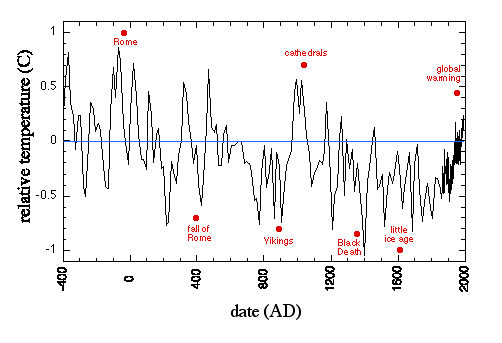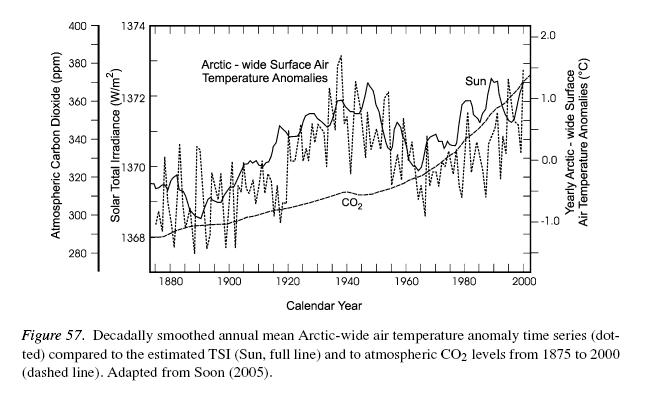Above Zagor discusses the comments of William E Rees who borrows from Diamonds conclusions. Diamond books although not originally intended relates to our past failures and what they can show us to help us avoid failure in the future. "Guns Germs and Steel" shows why the Sino and Eurasian civilizations have prospered while others have failed and disappeared. Wikipedia says of Diamond "He claims that ecological factors account for the development of civilizations and technologies. He identifies the main processes and factors of civilizational development that were present in Eurasia, from the origin of human beings in Africa to the proliferation of agriculture and technology. He posits, for instance, that agricultural development and complexity are a function of climate. Ultimately, the explanation does not center on humanity itself, but rather the resources at human disposal relative to geography, climate, and the availability of food and shelter."
While Rees is more pessimistic of his view of our future, believing collapse is inevitable (and he is discussing total collapse) Diamond does show that some cultures have endured especially Eurasian societies. They both do believe that we as humanity are capable (contrary to Wikipedias generalization) to deal with the problems confronting our survival as Rees says, " We are uniquely positioned to understand the forces of bio-cultural determinism that have heretofore had the quality of inevitability. In theory, this gives us the power at last to seize control over our own destiny and end the cycle of cultural boom and bust."
Now people are going to say, "See, we are better than them because we know about CO2 and can reverse or undo it's affects, and we are not ignoring it... see what has been accomplished through Kyoto and IPCC" (blah blah blah)
However simplistic comments like that imply that CO2 forcings on the climate are what's behind GW and that fixing that will save the earth from disaster. The collapses Diamond deals with in the book not only cover disasters that were ignored or unforeseen, but also where the societal response was incorrect. An example of this is the two cultures that inhabited Greenland during the Little Ice Age, the Norse and the Inuit. Both cultures dealt with the climate change in different ways. The Inuit survived and even thrive up until today, while the Norse collapsed. Diamond points out that they made a valiant effort to maintain themselves despite the change, however chose for some reason not to change their diet to a fish species that were abundant nearby. Perhaps it was a miscalculation, societal taboo or other factor. Regardless it shows us that wrong choices are just as bad as the disaster itself.
Although not a disaster per se, the US management of forests (see here) is an example of making wrong choices to a perceived threat. Due to a large scale forest fire in 1910 a policy was adopted called "total suppression". Management of the nations forests was geared towards various ways to avoid forest fires and achieve that objective. The result was " 1994 was a record setting fire season in fire fighting costs until 2000 and subsequently 2002, at $845 million, $1.3 billion and $1.7 billion respectively. Furthermore the 2000 season consumed 8.4 million acres, the most in 50 years (National Interagency Fire Cent, 2003)."
Sounds like our present mythology of becoming carbon neutral along with buying and selling carbon units so those with money can still fly leer jets to and from work.
That is our challenge today. Putting things in perspective. I mentioned earlier in this thread about Diamonds comments on the Island of Hispaniola. Shared by two nations with an intertwined history but with two different political environments. Arguably the DR side is a little different than the Haiti side geographically 9as well as slightly larger), but still similar enough to compare and the people are similar in regards to the impact they have on the environment around them.
Looking today, Haiti is deforested, erroded, infertile and in all manner of speaking has been ravaged to the brink of collapsed with very few options. The DR on the other hand despite the abuses of corruption and despotism seems to be fairing quite well environmentally at least. All of this is pretty much due to Trujillo banning deforestation and importing fossil fuels such as propane to replace wood as a source of heating/cooking energy. The failure to have a dictator committed to preservation of the forests on the Haiti side has brought about the different outcome.
Having lived on the Island for 3 years, I saw first hand the struggle of developing nations such as the DR and underdeveloped Haiti (Not for lack of trying!). There are many challenges that face the majority of earths population and some of the so called deniers are saying just that. Even if all of the evidence pointed to CO2 from our emissions as the cause of GW (I remain unconvinced) I can hardly justify in my mind denying the benefits of inexpensive energy in our modern society due to the life I live and what i have seen in the 3rd world. What I see happening is us finding ways to mitigate the detrimental effects of fossil fuels (of which CO2 is only a small component), bringing our explosive consumption under control, and eliminating the worst offenders (coal as it is used presently) as a natural course of our societies ongoing development.
Back to Diamonds research noted above, he points out that the world is not so similar so as to be lumped always together as a whole, which is what Global Averaging of data attempts to do. Transplanting European society to South Africa netted positive results because of its similar climate whereas Europen introduction into tropical climates was at times an utter failure. A similar climate was of no help in Australia initially due to other factors such as the irratic weather of that region, but North America was and on it goes.
In a paper Christy et al. 2007 the following comments are made in harmony with criticism of a global modeling as it relates to the debate:
First, it is apparent that we have little skill at reproducing and predicting changes on regional scales of the size up to a region like conterminous U.S. Secondly, it is therefore far more difficult to predict the climate effect of a particular policy aimed at altering current emissions of greenhouse gases (by small amounts) and thus somehow "hold back global warming". In other words, we are unable with any confidence to predict or detect climate outcomes from Kyoto-like policy options, especially on the scale where our citizens live.
Many of the statements below will use the terminology "consistent with" rather than "proof of". This is the way science works in the field of climate because we basically cannot give "proof" of the type found in laboratory experimentation
Even though Christy has been involved with papers in favor of AGW does Christy embrace the main argument about CO2's involvement?
In the following testimony I will first describe how a carefully reconstructed time series of temperatures in the Central Valley of California indicate that changes since 1910 are more consistent with the impacts of land-use changes than the effects currently expected from the enhanced greenhouse theory.
His critique of the present data?
This and other research points to the need for a better temperature index than what is used now over land: daytime temperatures, rather than the average daily temperatures (used now), are more directly representative of the layer in the atmosphere affected by greenhouse gases. Secondly, I will describe results from two papers which examine our knowledge of atmospheric temperatures as they relate to the surface. The results point to a more modest atmospheric warming than anticipated from our current understanding of the enhanced greenhouse theory. Further, I argue for an independent program with significant funding to evaluate climate model simulations and projections with a healthy, objective eye.
So referring to his study last year of the San Joaquin Valley (inhabited with accompanying land use, irrigation etc) and Sierra Nevada (mostly uninhabited) climate using recorded data from the last 100 years He relates what the figures extrapolated in those two different regions, please note why there is a need to proceed with caution before jumping to conclusion such as the cause of "Global Warming":
We discovered that indeed the nighttime temperatures in the 18 Valley stations were warming rapidly, about 6°F in summer and fall, while the same daytime temperatures fell about 3°F. This is consistent with the effects of urbanization and the massive growth in irrigation in the Valley.
And the nearby Sierra Nevada?
The real surprise was the composite temperature record of the 23 stations in the central Sierra foothills and mountains. Here, there was no change in temperature. Irrigation and urbanization have not affected the foothills and mountains to any large extent. Evidently, nothing else had influenced the Sierra temperatures either.
Quelle suprise! So what about the models being used AT THE PRESENT TIME?
Because these results were provocative, we performed four different means of determining the error characteristics of these trends and determined that nighttime warming in the Valley was indeed significant but that changes in the Sierras, either day or night, were not.Models suggest that the Sierra’s are the place where clear impacts of greenhouse warming should be found, but the records we produced did not agree with that hypothesis.
For policymakers in California this result is revealing. It suggests that to "do something" about warming in central California means removing agricultural and urban development rather than reducing greenhouse gas emissions.
The paper then goes on to describe similar micro applications of the climate models in other areas, such as the SE USA and Midwest. Applying the models show warming trends there too while the macro data shows there has been moderate cooling.
[Note: as a follow-up to Christy (2002) on Alabama temperature trends, we examined the output from 10 climate models. All models showed a warming trend for 1900 to 2000 in the SE U.S. However, observations show a cooling trend (common throughout the SE U.S.) Additionally, Kunkel et al. 2006 perform a similar analysis for the central U.S. where temperatures have not experience a warming trend while model simulations of the same period do. Kunkel et al. identified this feature in the central U.S. as a "warming hole".]
The conclusion I draw is the same as Christy. Applying our expertise and resources to flawed data and projection models may give us a feeling of well being, but nothing will have substantially been accomplished with regard to the problem at the outset.
The bottom line here is that models can have serious shortcomings when reproducing the type of regional changes that have occurred. This also implies that they would be ineffective at projecting future regional changes with confidence, especially as a test of the effectiveness for specific policies. In other words it will be almost impossible to say with high confidence that a specific policy will have a predictable or measurable impact on climate.
Given the warnings of people like Reese and Diamond, it is vital we do something when society is faced with verifiable predictable catastrophe and or collapse. Our societal problem is not Global warming, but rather unsustainable consumption of resources. The last time I checked, those resources included much more than fossil fuels. Rather than unreliable computer models that can be shown to be weak, questions of conservation and resource management need not require much more than a slide rule, calculator or spreadsheet. Oh and possibly a little diet and exercise!
The debate continues.
Frank75

